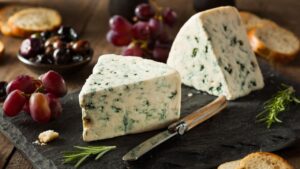Brown rice and sushi rice vinegar are both staples of Japanese cuisine. Brown rice is a whole grain that has been minimally processed to retain its nutrient content, while sushi rice vinegar is a seasoned vinegar that is commonly used to flavor sushi rice.
Although they share some similarities, brown rice, and sushi rice vinegar have different nutritional profiles and uses in cooking. This article will compare brown rice and sushi rice vinegar in terms of their nutrition, flavor, cooking methods, benefits for health, drawbacks for health, environmental impact, and cost.
Comparison of Brown Rice vs Sushi Rice
Nutritional Comparison
Brown rice is a whole grain that is high in fiber, vitamins, and minerals. One cup of cooked brown rice contains about 216 calories, 5 grams of protein, 3.5 grams of fat, and 45 grams of carbohydrates, including 3.5 grams of fiber. It also contains significant amounts of magnesium, phosphorus, manganese, and selenium. Brown rice is an excellent source of complex carbohydrates, which provide sustained energy and promote satiety.
Sushi rice vinegar is a seasoned vinegar that is made by combining rice vinegar, sugar, and salt. It is commonly used to flavor sushi rice, which is a short-grain rice that has been cooked and seasoned with sushi rice vinegar. Sushi rice vinegar is low in calories and contains negligible amounts of nutrients.
Flavor and Texture
Brown rice has a nutty flavor and a chewy texture. It takes longer to cook than white rice because the outer bran layer must be softened. Brown rice can be used in a variety of dishes, such as stir-fries, salads, and casseroles.
Sushi rice vinegar has a sour and slightly sweet flavor. It is commonly used to season sushi rice, which has a sticky texture that is ideal for forming sushi rolls. Sushi rice vinegar can also be used to flavor other types of rice dishes or as a salad dressing.
Cooking Methods
Brown rice can be cooked using a variety of methods, such as boiling, steaming, or in a rice cooker. One common method is to use a 2:1 ratio of water to rice and simmer the rice for about 45 minutes. Brown rice can also be soaked overnight to reduce cooking time and improve texture.
Sushi rice is typically cooked using a special method that involves soaking the rice for 30 minutes, then cooking it in a covered pot for 10-15 minutes. Once the rice is cooked, it is transferred to a bowl and seasoned with sushi rice vinegar, sugar, and salt.
Benefits for Health
Brown rice is a nutritious food that has been linked to a variety of health benefits. The fiber in brown rice helps to promote digestive health and may reduce the risk of colon cancer. Brown rice is also a good source of magnesium, which is important for bone health and may reduce the risk of type 2 diabetes.
Sushi rice vinegar does not have significant health benefits on its own, but it is a low-calorie alternative to other types of salad dressings or sauces that are high in sugar or fat. Sushi rice, which is flavored with sushi rice vinegar, is also a good source of carbohydrates that can provide energy for physical activity.
Drawbacks for Health
While brown rice is generally considered a healthy food, it can be contaminated with arsenic, which is a toxic substance that can accumulate in rice plants. Arsenic can increase the risk of cancer, cardiovascular disease, and neurological problems. To reduce the risk of arsenic exposure, it is recommended to choose brown rice that is grown in regions with low levels of arsenic or to soak brown rice before cooking.
Sushi rice vinegar is generally considered safe, but it can contain high levels of sodium due to the addition of salt. High sodium intake is linked to high blood pressure and an increased risk of cardiovascular disease. It is important to use sushi rice vinegar in moderation and to choose low-sodium varieties when possible.
Environmental Impact
Brown rice production has a relatively low environmental impact compared to other grains. Brown rice requires less water and fertilizer than white rice and is less likely to cause soil erosion or water pollution. However, rice cultivation can contribute to greenhouse gas emissions, particularly if rice fields are flooded.
Sushi rice vinegar production has a low environmental impact because it is made from rice vinegar, which is a byproduct of rice wine production. However, some brands of sushi rice vinegar may contain additives or preservatives that can have negative environmental effects.
Cost Comparison
The cost of brown rice and sushi rice vinegar can vary depending on the brand and the region. Generally, brown rice is more expensive than white rice because it requires more processing and has a shorter shelf life. Sushi rice vinegar is relatively inexpensive and can be found in most grocery stores.
Conclusion
In conclusion, brown rice and sushi rice vinegar are two staples of Japanese cuisine that have different nutritional profiles, flavors, and uses in cooking. Brown rice is a whole grain that is high in fiber, vitamins, and minerals, while sushi rice vinegar is a low-calorie vinegar that is used to flavor sushi rice.
Both brown rice and sushi rice vinegar have benefits for health and drawbacks for health, and their environmental impact and cost vary. Ultimately, the choice between brown rice and sushi rice vinegar depends on personal preference and dietary needs.





